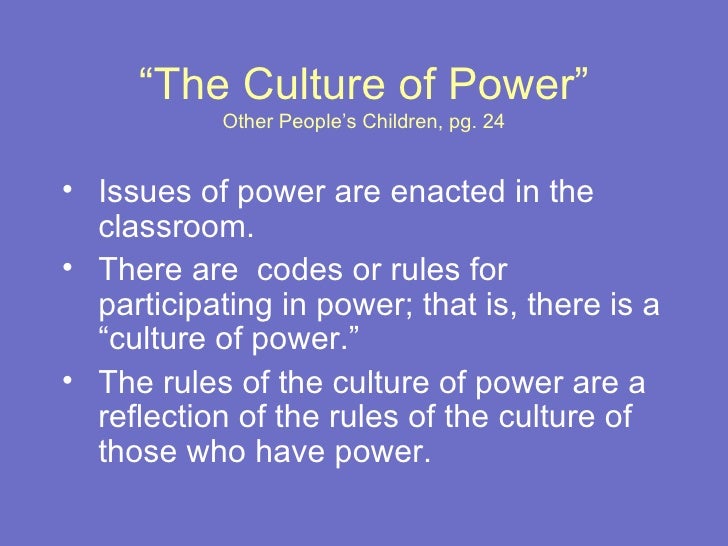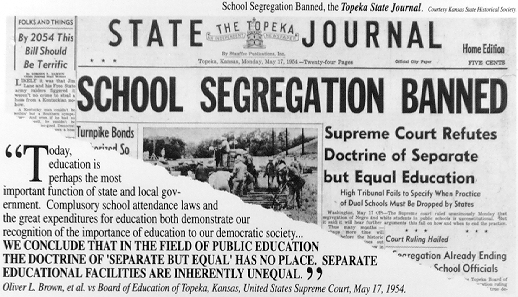“Segregation of white and colored children in public schools has a detrimental effect upon the colored children. The impact is greater when it has the sanction of the law, for the policy of separating the races is usually interpreted as denoting the inferiority of the Negro group...Any language in contrary to this finding is rejected. We conclude that in the field of public education the doctrine of ‘separate but equal’ has no place. Separate educational facilities are inherently unequal.”
Earl Warren, Chief Justice of the U.S. Supreme Court
 The United States Supreme Court decision in Brown v. Board of Education on May 17, 1954, was the reason segregation in schools "ended". This case started off with a young African American girl named Linda Brown was forced to walk six blocks to her elementary school due to racial segregation. Because of the color of her skin she was denied to attend a white school that was closer to her. This was the beginning of abolishing segregated education.
The United States Supreme Court decision in Brown v. Board of Education on May 17, 1954, was the reason segregation in schools "ended". This case started off with a young African American girl named Linda Brown was forced to walk six blocks to her elementary school due to racial segregation. Because of the color of her skin she was denied to attend a white school that was closer to her. This was the beginning of abolishing segregated education.
I decided to use Emily Prisco's blog as the center of my own. The goal of this civil rights movement was to abandon racial segregation and racism however, like Emily says, "We have made many strives and improvements since the Brown v. Board case, however, we are facing old and new issues of racism in today's society." She goes on to write, "If a person from a different race does not dress in a certain way or come from an elite academic setting then our perceptions of their being and opinions are inadequate. We do not fully accept an individual from a different race unless they do not fall under their stereotype." I completely agree with Emily because although individuals were separated based on their skin tone and race, individuals are now separated by their social class. We attempt to eliminate racism and segregation, yet it is still present in our society. "Brown v. Board worked to eliminate racial segregation in public schooling but now it has evolved into an economic segregation," says Emily.

Tim Wise, the author of Between Barack and a Hard place: Racism and White Denial in the Age of Obama, believes white privilege and discrimination against people of color still continue. He relates to Obama by saying, "I don't think we want to have a society, where in order to be a successful person of color you have to bring it the way Obama brings it." Just because our president is black does not mean that racism has been defeated. Though he is the first African American President, what he does and the money he makes does not reflect on other African Americans. Emily points out from Wise's interview, "we have not reached a level of racial equity until people of color can be just as mediocre as white people."
The issues that Bob Herbert raises shaped how I think about Brown v. Board of Education. Herbert explains that a way to improve the education of poor children is by "getting them away from learning environments that are smothered in poverty." He goes on to say that it is not about the culture or race of the students that matters but rather the "improved all-around environment of schools with better teachers, fewer classroom disruptions, pupils who are more engaged academically, parents who are more involved." This shows that regardless of the Reconstruction Amendments that were intended to extend the rights of African Americans, the framing of Brown v. Board case is still relevant in today's society.

Emily relates by saying, "People believe that by separating the schools based on family income is beneficial to their learning...We are depriving these students of the education that they would receive at a higher income school because we can not provide them with what they need for academic success." What if the students we work with at our Service Learning schools in Providence did not come from diverse backgrounds? What if we worked at other towns other than Providence, such as Barrington or Lincoln? Would we receive the same experience at a non-urban educational setting?
We are still separate yet unequal likewise to what Herbert mentions, "we are still trying as a country to validate and justify the discredited concept of separate but equal schools."












